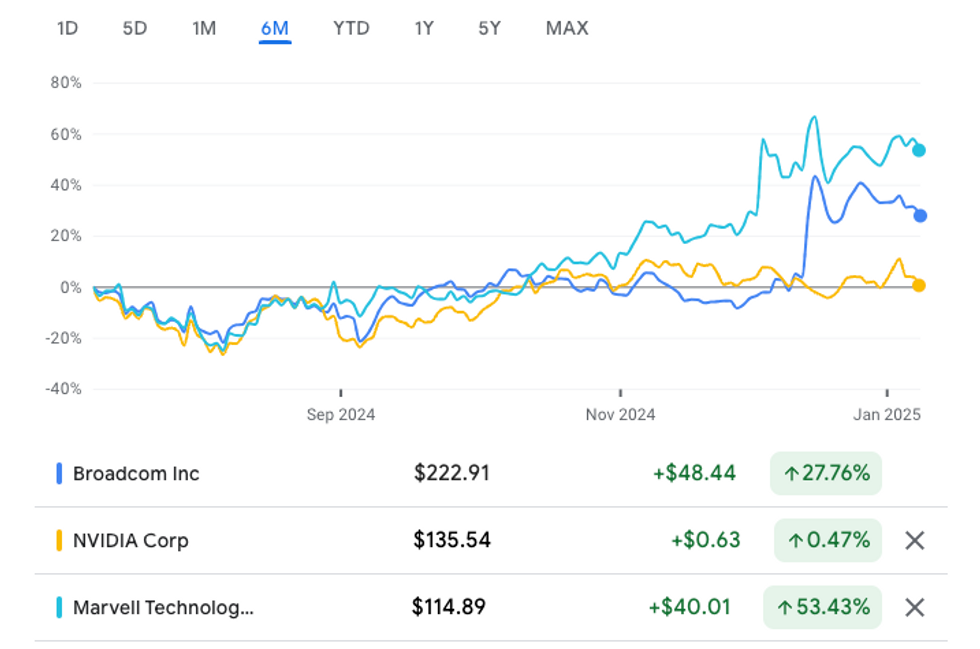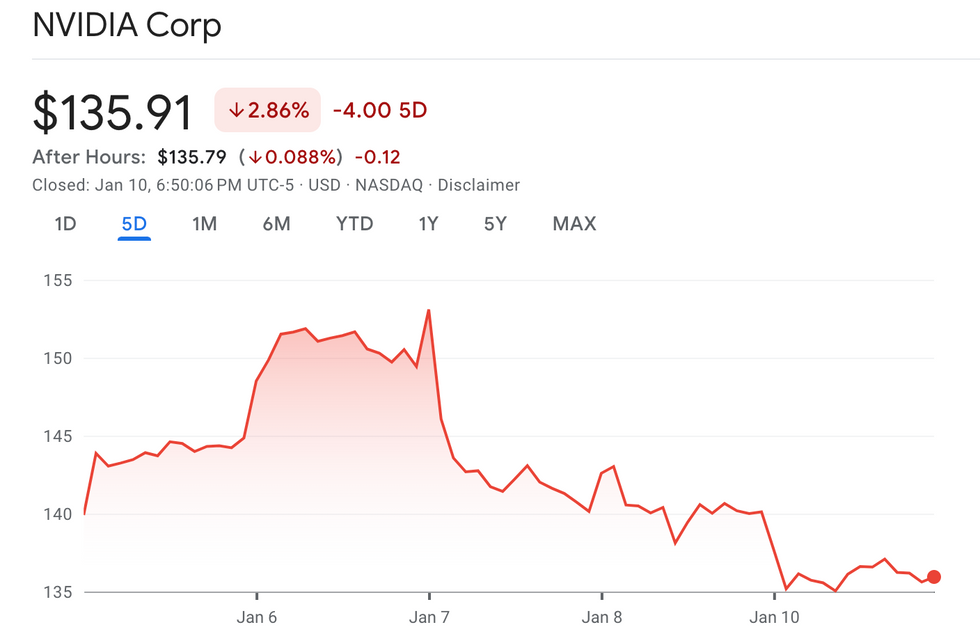1. AI takes center stage at CES
Unsurprisingly, CES underscored the growing influence of artificial intelligence (AI) across the tech landscape, with AI chips for PCs, new electric vehicles and the influence of robotics on the workforce taking center stage.
AI was prominent, featured in everything from appliances to pets. Following substantial investment, companies are under pressure to demonstrate the value and justify the cost of AI integration in their products.
As mentioned, tech stocks rose on Monday as the event began, with chipmakers like NVIDIA (NASDAQ:NVDA), Broadcom (NASDAQ:AVGO), Micron Technology (NASDAQ:MU), Advanced Micro Devices (AMD) (NASDAQ:AMD) and Taiwan Semiconductor Manufacturing Company (NYSE:TSM) leading the surge.
NVIDIA, whose CEO Jensen Huang gave the keynote address at CES, was a key focus.
Following the company’s weaker-than-expected revenue outlook in November, investment interest in AI has been dispersing to include companies such as Broadcom and Marvell Technology (NASDAQ:MRVL), whose share prices increased in the fourth quarter of 2024 while NVIDIA’s remained relatively flat.

Broadcom, NVIDIA and Marvell Technology performance, Q4 2024.
Chart via Google Finance.
After a product reveal, NVIDIA saw its share price fall 8.5 percent to US$140.01 on Tuesday (January 7), its largest intraday drop since October 15. Chief among the AI bellwether’s long list of new products are the GeForce RTX 50 series GPUs, built on the Blackwell architecture. The flagship RTX 5090 for demanding workloads will be available this month for US$1,999, while the RTX 5070, a more budget-friendly version, will arrive in February for US$549.
NVIDIA also unveiled Project Digits, a desktop PC designed to empower AI researchers, data scientists and students; it has the ability to run very large AI models on laptops. Developed in collaboration with Taiwan’s MediaTek (TPE:2454), the model is equipped with a Grace Blackwell Superchip and runs a version of the Linux operating system. Project Digits essentially puts an AI-powered personal supercomputer within reach for US$3,000 starting in May.

NVIDIA performance, January 6 to 10, 2025.
Chart via Google Finance.
NVIDIA’s move highlights a broader trend at CES this year: the rise of AI PCs. AMD, Intel (NASDAQ:INTC) and Qualcomm (NASDAQ:QCOM) all introduced chips designed to bring AI to everyday computing. AMD’s high-powered Ryzen CPUs, which will power Dell’s (NYSE:DELL) corporate PCs, reportedly outperform Macs and offer a longer battery life.
Meanwhile, Qualcomm is broadening its business beyond mobile phone chips with the Snapdragon X Platform, an affordable chip for laptops and PCs that will run Microsoft’s (NASDAQ:MSFT) Copilot+ software. The company will also soon release a small desktop computer built with the chip. PC makers including Dell — which announced a rebranding of its PC line — will reportedly offer laptops based on the new product in early 2025.
AMD, Qualcomm and Dell saw share…
Read More: 4DMedical progresses to a commercial agreement with Qscan

